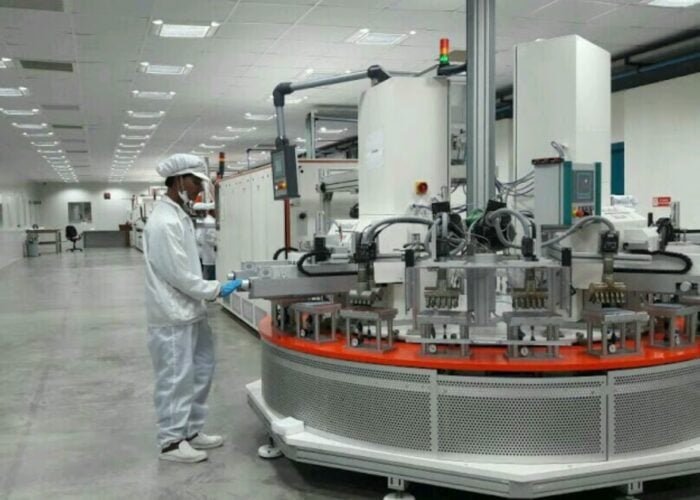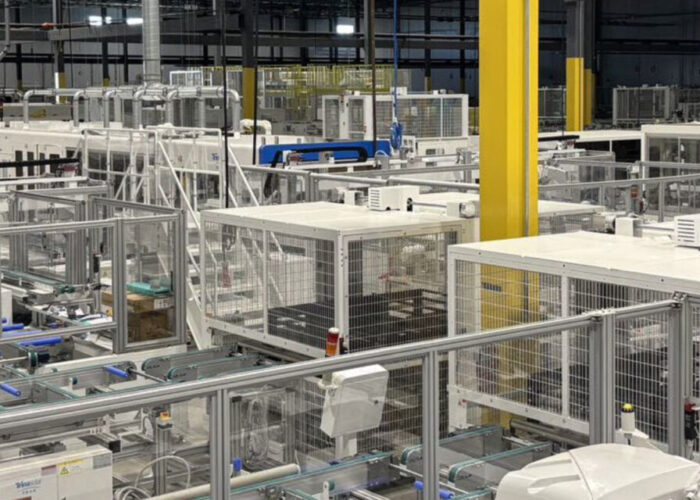
Solar Module Super League (SMSL) member Canadian Solar has lowered its 2023 revenue guidance primarily due to rapid decline in solar module prices in Q2.
The company said that increased solar module shipment volume and higher projects sales partially offset the decline in average selling price as the company registered net revenues of US$2.4 billion in the second quarter of 2023, up 39% from the previous quarter and 19% from the same period the previous year.
Unlock unlimited access for 12 whole months of distinctive global analysis
Photovoltaics International is now included.
- Regular insight and analysis of the industry’s biggest developments
- In-depth interviews with the industry’s leading figures
- Unlimited digital access to the PV Tech Power journal catalogue
- Unlimited digital access to the Photovoltaics International journal catalogue
- Access to more than 1,000 technical papers
- Discounts on Solar Media’s portfolio of events, in-person and virtual
Driven by lower module pricing, Canadian Solar has lowered its 2022 revenue forecast to US$8.5 – 9 billion, down on previous guidance of US$9 – 9.5 billion, after increasing it in its Q1 2023 financial results.
Continuing on the increased shipment numbers from the previous quarter, Canadian Solar shipped a record 8.2GW during Q2 2023, which is 62% higher than the same period last year. This brings total shipments for the first half of the year to 14.3GW, as shown in the chart below.
Yan Zhuang, president of Canadian Solar’s CSI Solar – the company’s manufacturing division – subsidiary, said: “Looking ahead, we expect to significantly optimise our cost structure as we ramp up our internal cell and wafer capacity in the second half of the year and meaningfully improve on our capacity’s vertical integration.”
Furthermore, the solar manufacturer completed the initial public offering (IPO) of its subsidiary, CSI Solar, during Q2 2023 on the Shanghai Stock Exchange.
The solar manufacturer expects Q3 2023 shipments to be in the range of 8.5-8.7GW, while the full-year guidance is expected to be between 30-35GW.
As Canadian Solar continues to increase its module shipments, it also secures important tunnel oxide passivated contact (TOPCon) supply agreements with the most recent one this month with EDF Renewables North America for 7GW of modules. Speaking of TOPCon capacity, Shawn Qu, chairman and CEO of Canadian Solar, outlined the company’s target to ramp up its TOPCon capacity to reach 60 to 70GW of annual capacity in 2024.
The company has a current annual capacity of 20.4GW, 21GW, 26GW and 37.7GW of ingots, wafers, cells and modules, respectively as of the end of June 2023 and is targeting to more than double each section by December 2024, when it expects to have an annual capacity of 50.4GW, 60GW, 70GW and 80GW for ingots, wafers, cells and modules respectively. Compared to the previous quarter, Canadian Solar aims to have 10GW more of n-type annual wafers and cell capacity and increase its module production by 5GW by the end of 2024.
| June 2023 | December 2023 | March 2024 | December 2024 | |
| Ingot | 20.4 | 20.4 | 20.4 | 50.4 |
| Wafer | 21.0 | 21.0 | 30.0 | 60.0 |
| Cell | 26.0 | 50.0 | 54.0 | 70.0 |
| Module | 37.7 | 50.0 | 59.0 | 80.0 |
Earlier this year the solar manufacturer unveiled its plan to build a 5GW module assembly plant in the county of Dallas, US, which will have the solar cells supplied by the Thailand facility. However, Qu said during an earnings call that the company was looking into building a solar cell factory in the US.
As costs have dropped significantly since the beginning of the year, Canadian Solar expects polysilicon prices to have reached its bottom at RMB70/kg (US$9.6/kg), from a 2022 high of more than RMB300/kg. This will affect nearly 40% of this year’s planned shipments, while greater vertical integration by Q4 2023 will help improve margins, according to the company.
Conference call transcript from Seeking Alpha.







